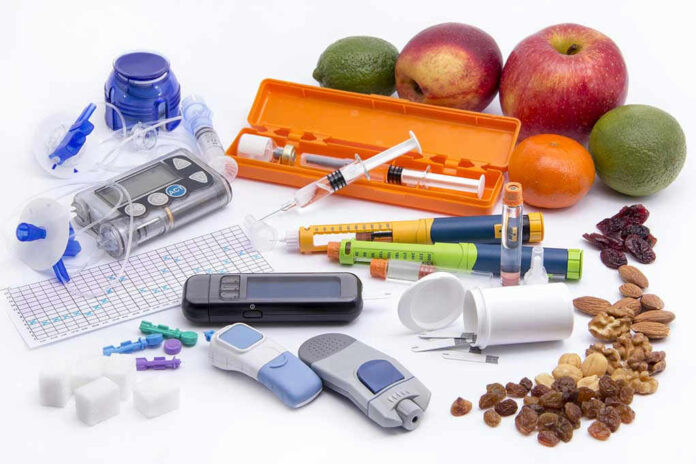Three revolutionary longevity treatments—once the domain of elite labs—are now quietly reshaping everyday healthspan from the comfort of home, promising a future where your biological age may depend less on luck than on science-driven routine.
Story Snapshot
- At-home longevity treatments like NAD⁺ boosters, senolytics, and stem cell therapies are now consumer-accessible and evidence-informed.
- Breakthroughs in biomarker testing and digital health platforms enable unprecedented personalization of anti-aging interventions.
- While these therapies show true promise, experts urge realism about their limitations and emphasize the continued importance of lifestyle factors.
- Ongoing clinical trials and regulatory scrutiny are shaping the future of safe, effective healthspan extension.
From Lab Bench to Bathroom Cabinet: The New Face of Longevity
For decades, extending life and healthspan was the stuff of science fiction or, at best, distant medical innovation. But today, three at-home longevity treatments—NAD⁺ boosters, senolytics, and stem cell-based protocols—have leapt from clinical research into the hands of everyday consumers. The once exclusive field of age-delaying science has been democratized, with personalized biomarker testing and AI-driven health platforms guiding users to interventions tailored to their own biology.
Personalization is no longer an empty buzzword. Companies now offer mail-in test kits analyzing everything from DNA methylation to inflammatory markers, letting consumers track their biological age as easily as their steps. This enables a feedback loop: tweak your regimen, watch your numbers change, iterate. The sheer accessibility of these tools—and the sophistication behind them—has created a seismic shift in how proactive adults approach aging. But does this democratization live up to its promise?
NAD⁺ Boosters: Science, Hype, and the Hope for Cellular Youth
Among the first at-home interventions to go mainstream, NAD⁺ boosters like NMN (nicotinamide mononucleotide) and Resveratrol have drawn high-profile endorsements from researchers such as Dr. David Sinclair, who touts their ability to enhance DNA repair and metabolic health. Recent clinical trials confirm that NMN and Resveratrol can elevate NAD⁺ levels in humans, with measurable improvements in physical performance. However, long-term impacts on aging itself remain uncertain, with experts urging caution against overblown claims. The real-world appeal is clear: a supplement that might help cells function as if they were years younger, all without a prescription.
The allure of a daily capsule that could slow time is powerful. Yet, credible voices in the field emphasize that these molecules are most effective when combined with foundational lifestyle changes—nutrition, exercise, sleep, and cognitive engagement. For all their promise, NAD⁺ boosters are an adjunct, not a replacement, for the fundamentals.
Senolytics and Stem Cells: Clearing Away the Old, Building the New
Senolytics—drugs or supplements targeting “zombie” cells that accumulate with age and fuel chronic disease—are the vanguard of the next anti-aging wave. Preclinical and early human studies suggest these compounds can reduce frailty and improve tissue function, sparking hope for meaningful healthspan extension. At-home senolytic protocols are entering the market, yet experts stress that rigorous clinical validation is ongoing. Among the most promising candidates, rapamycin and related compounds have shown robust effects in animal models, but require more human data before widespread adoption.
Stem cell-based therapies, long confined to specialized clinics, are now being adapted for at-home use—primarily via kits designed to stimulate endogenous repair processes rather than direct cell infusions. These advances, while exciting, raise questions about safety and oversight. Regulatory agencies and professional bodies recommend clinical guidance and transparent communication of both benefits and risks. The potential for regeneration is real, but so are the risks if protocols outpace evidence.
Promises, Pitfalls, and the Road Ahead: What Will Shape Longevity’s Future?
The convergence of consumer demand, technological innovation, and maturing science is accelerating the mainstreaming of at-home longevity routines. The economic impact is already visible in the explosive growth of the longevity supplement and biomarker testing markets, hinting at a future where healthspan optimization becomes as routine as brushing teeth.
Yet, this new era is not without pitfalls. Early anti-aging products often overpromised and underdelivered, breeding skepticism and regulatory scrutiny. Today’s interventions are increasingly evidence-backed, but many commercial claims still run ahead of the data. Major opinion leaders caution that supplement and testing companies must maintain transparency, avoid hype, and encourage consumers to adopt multi-dimensional strategies that blend proven lifestyle changes with new interventions. Ongoing randomized trials and long-term follow-up will be critical in separating genuine breakthroughs from fleeting trends.
Sources:
First national review identifies anti-aging compounds
Clinical trials in longevity science: Where we stand in 2025
Critical review of anti-aging interventions











